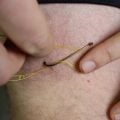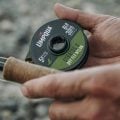April Vokey’s Amazon Adventure
There are outings, trips, and adventures—and then there are expeditions. Each has its time and place, but more often than not, they’re defined by the limits of money, responsibility, and age.
Life can be peculiar like that, offering opportunities to those wise enough to see their value yet shrewd enough to recognize their consequence. A job that can’t be neglected, a relative that can’t be left, a body that won’t cooperate. Some say youth is wasted on the young; I say freedom is wasted on the free.
I know this all too well from experience. Raising a daughter, I’ve lost the privilege of carelessness. I’ve opted more often instead for family excursions or, as my husband puts it, trips that guarantee me “back home in one piece.”
But I still craved the wild; needed the expanse; was desperate for adventure.
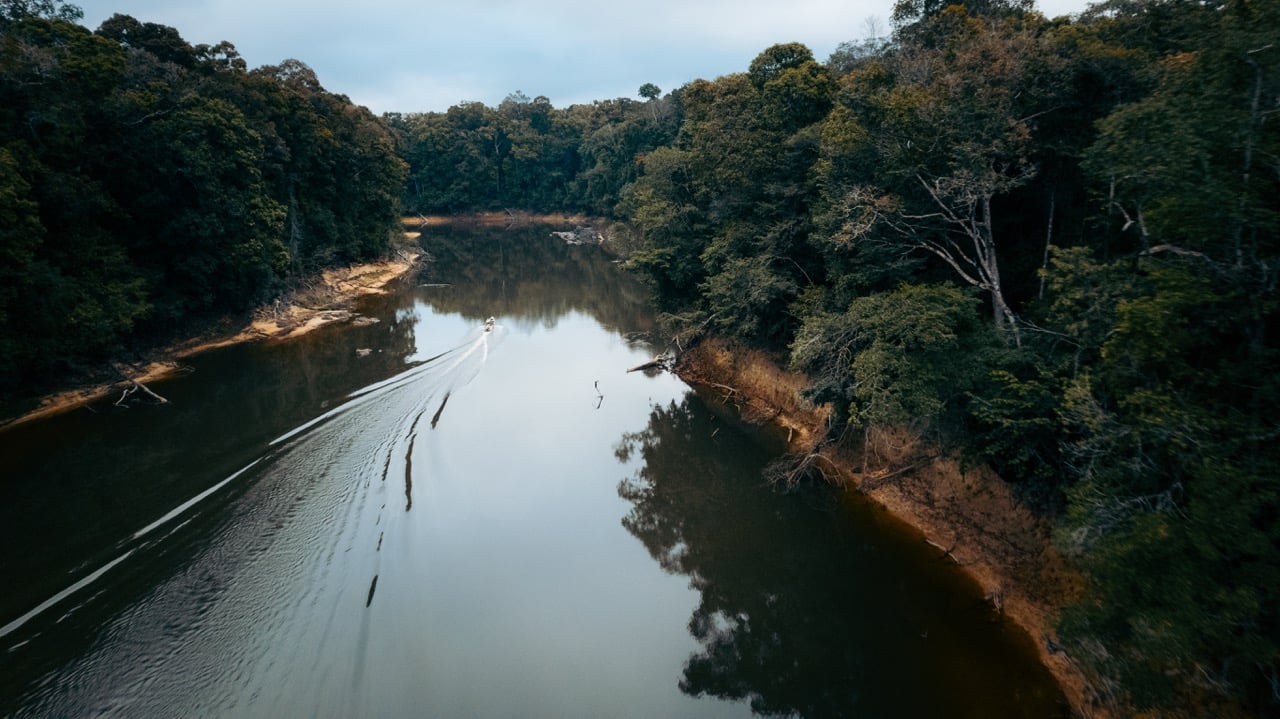
It hit me over a margarita in a little bar near the Bozeman, Montana, airport. My flight was hours away, and I’d managed to squeeze in lunch with friend and former colleague, Midcurrent‘s own Sam Lungren. We caught up on life, work, fishing reports, and travel, but it was in the last five minutes that the magic happened.
“So, what else do you have coming up?” I asked casually as I prepared to leave.
He told me about an upcoming jungle adventure in Guyana, where they’d sleep in hammocks, kill their own food, and catch huge, untouched fish. I sat my ass back down.
Six months later, we were on a prop plane headed south to Lethem, a small village near the Brazilian border alongside cinematographer Jesse Males of Backwater Fly Fishing. From there, it was a five hour van ride and an additional six hours by boat to meet the guides and operators who live in a small village along the riverbank.
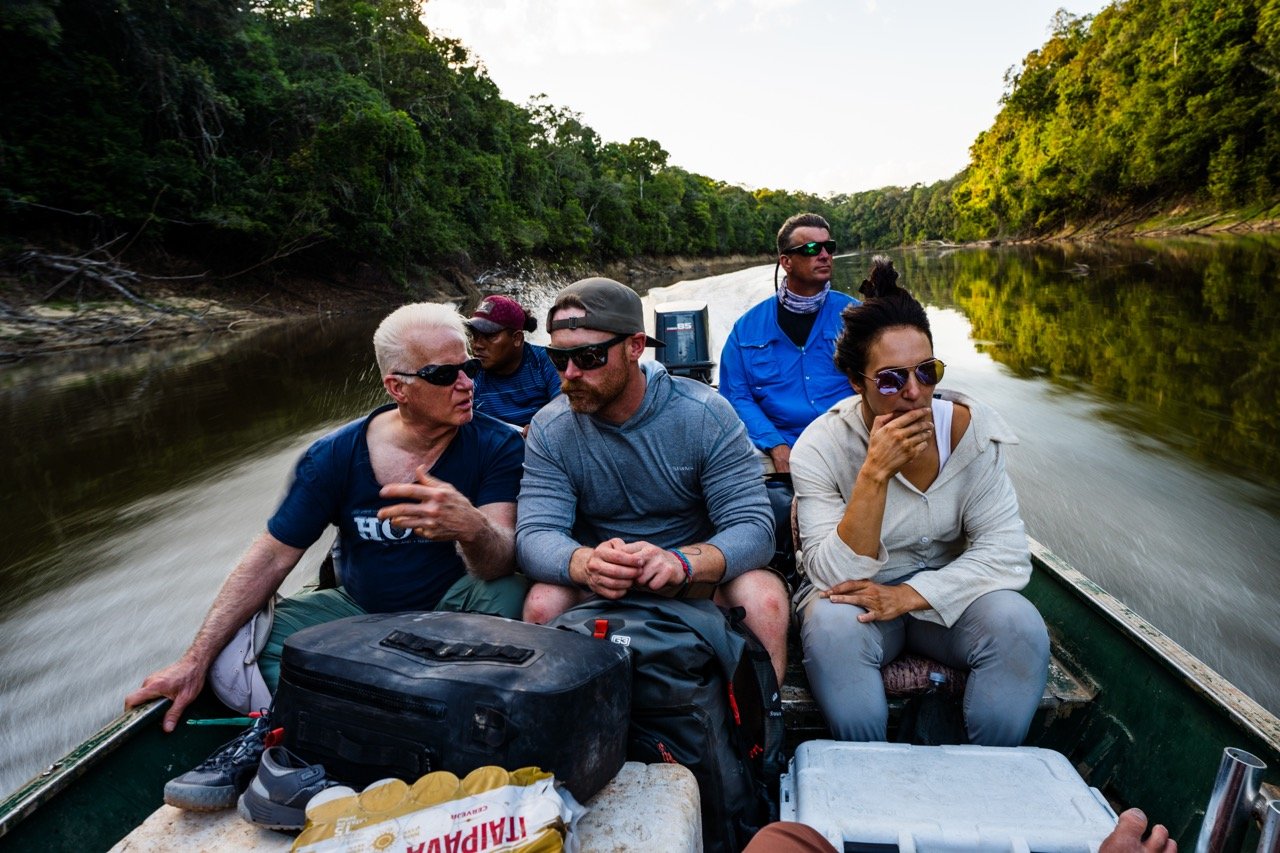
This land is home to those indigenous groups, the Wapishana, Macushi, and others, whose deep-rooted connection to the jungle underscores its significance. Many of the young men work at a operation upstream in a camp on a deep right-hand bend of the Rewa River. This region, largely untouched compared to other tropical zones, is a crucial haven for conservation and a treasure trove for scientific exploration.
We arrived at nightfall, just in time to see the familiar scene of last-light in camp. The guides set hand-lines for catfish, refueled boats, and eyed us from afar. As did the glaring eyes of black caiman, which snuck closer under the veil of nightfall. We met outfitter Jules Fredericks, a native of Lethem who runs the operation and briefed us on what to expect in terms of fishing over the next eight days.
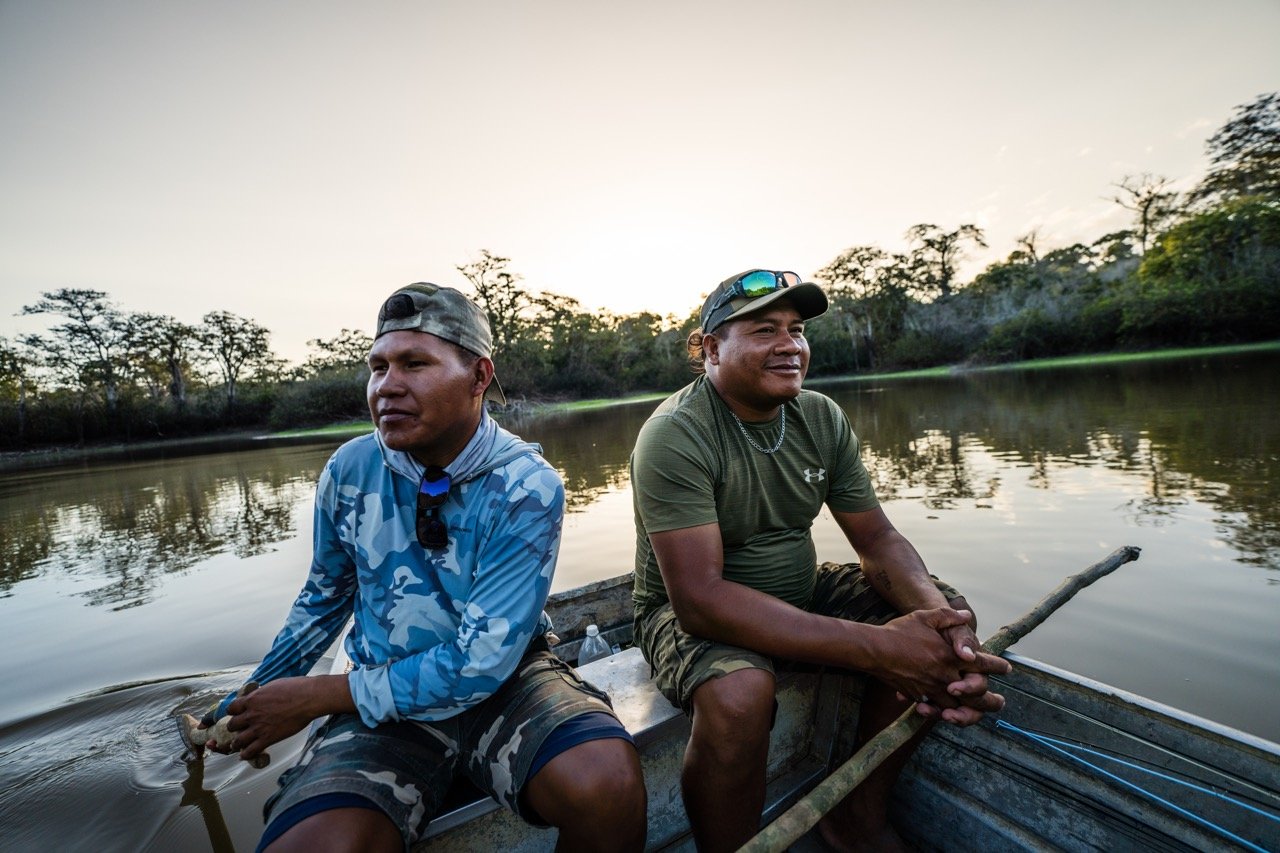
First on our list was the mighty arapaima. Capable of exceeding 10 feet in length and weighing more than 400 pounds, the arapaima is one of the largest freshwater fishes in the world. They inhabit slow-moving rivers and jungle lagoons, inhaling their prey rather than pursuing it.
Arapaima are ancient creatures, with origins tracing back to prehistoric times. One of their most fascinating traits is their ability to breathe air. They have a modified swim bladder functioning like a lung, allowing them to surface and gulp air—an adaptation crucial for survival in oxygen-poor waters. It was also an important clue for locating them.
I’m not sure why I assumed arapaima would be fierce feeders chasing everything that moved, as they’re actually quite an elegant, slow-moving creature—until they’re hooked, that is. Our guide Terry poled us through the still lagoon, pointing out signs where a fish was or had recently been—fine air bubbles, gentle water ripples, the sheen of a tail behind.
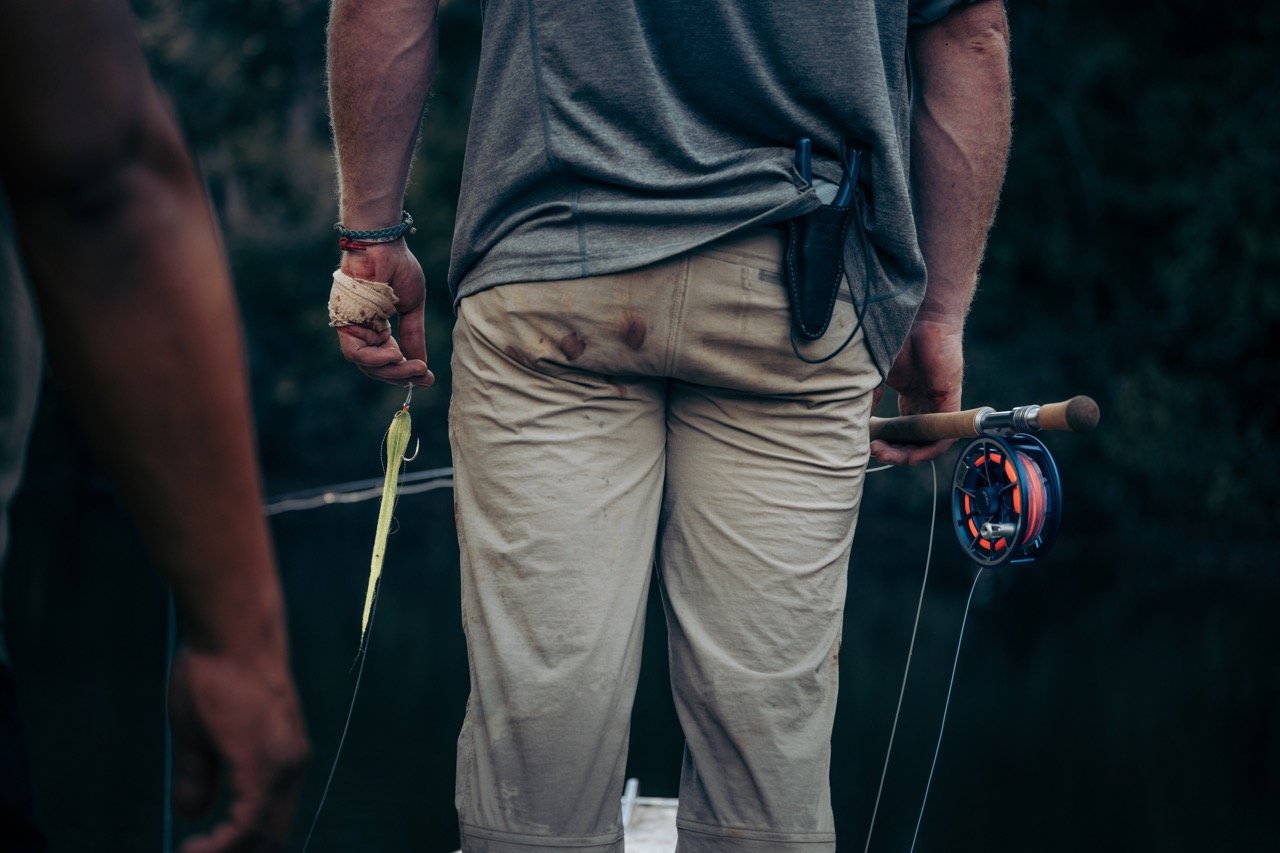
Sam, who fished these waters the previous year, demonstrated fly presentation with ease. Casting to the fish’s head, he let the fly sink, stripped, waited, and then strip-set into the first arapaima of the trip.
Sidenote: if you’d like to see the action firsthand and learn more about these incredible fish, our film will be featured at this year’s Fly Fishing Film Tour (F3T).
Together, we hooked and lost several jumping arapaima before landing the first bronze dragon. Admiring its pink-flecked scales and textured head, I thought it looked to have been etched by an artist. With our guides handling most of the wrangling (absolute legends that they are), we had a moment to appreciate the arapaima’s stunning details. The moment was short-lived, as it was only a matter of time before it would burst with power again. Sam had warned us of the arapaima’s strength and spring-loaded tail, further intimidating me with a spectacular photo of a hundred-pounder connecting with his face. We opted for a quick release, watching it slip back into the murky depths.
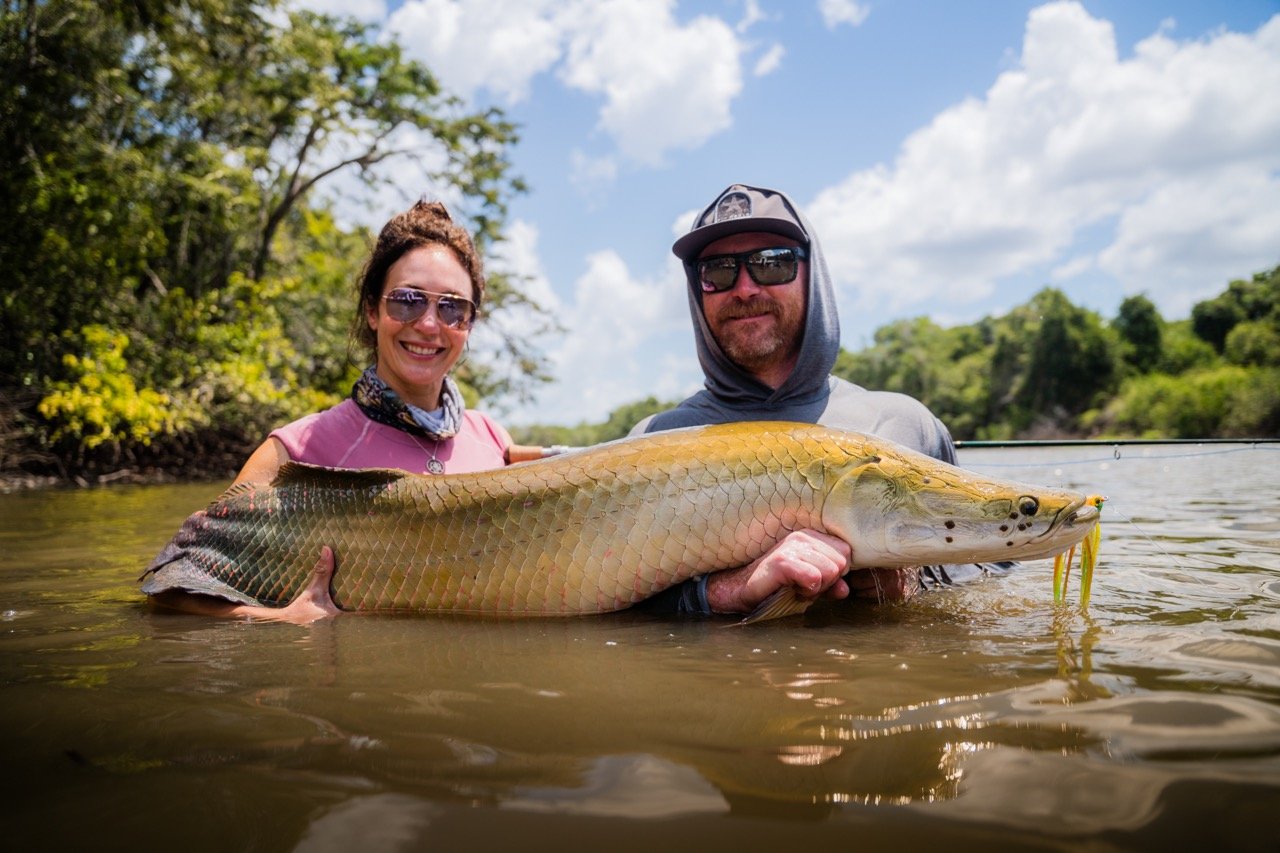
In addition to arapaima, the jungle waters teem with other incredible fishes like payara (vampire fish), peacock bass, arowana, pacu, black piranha, numerous catfishes, wolf fish and more. Every pull was exciting; every lost fish assumed to be a record or undiscovered species.
For me, the best was yet to come: the payara. With menacing fangs up to 6 inches long and a diet consisting of anything with bones to crunch, the payara grows up to 48 inches and 40 pounds. I found it the most impressive of the species in the Midcurrent trip gallery, so I’m not sure why I assumed it’d be the least appealing to target on the fly.
Whatever my expectations were, they were wrong. We sight-fished for them, watching as they attacked our flies on both dry and sinking lines. They ran fast, moved erratically, jumped, spat, and snarled (not really, but it wouldn’t have surprised me if they did). And that was only if we managed to hook them. The payara’s bony mouth tests even the most experienced anglers’ patience.
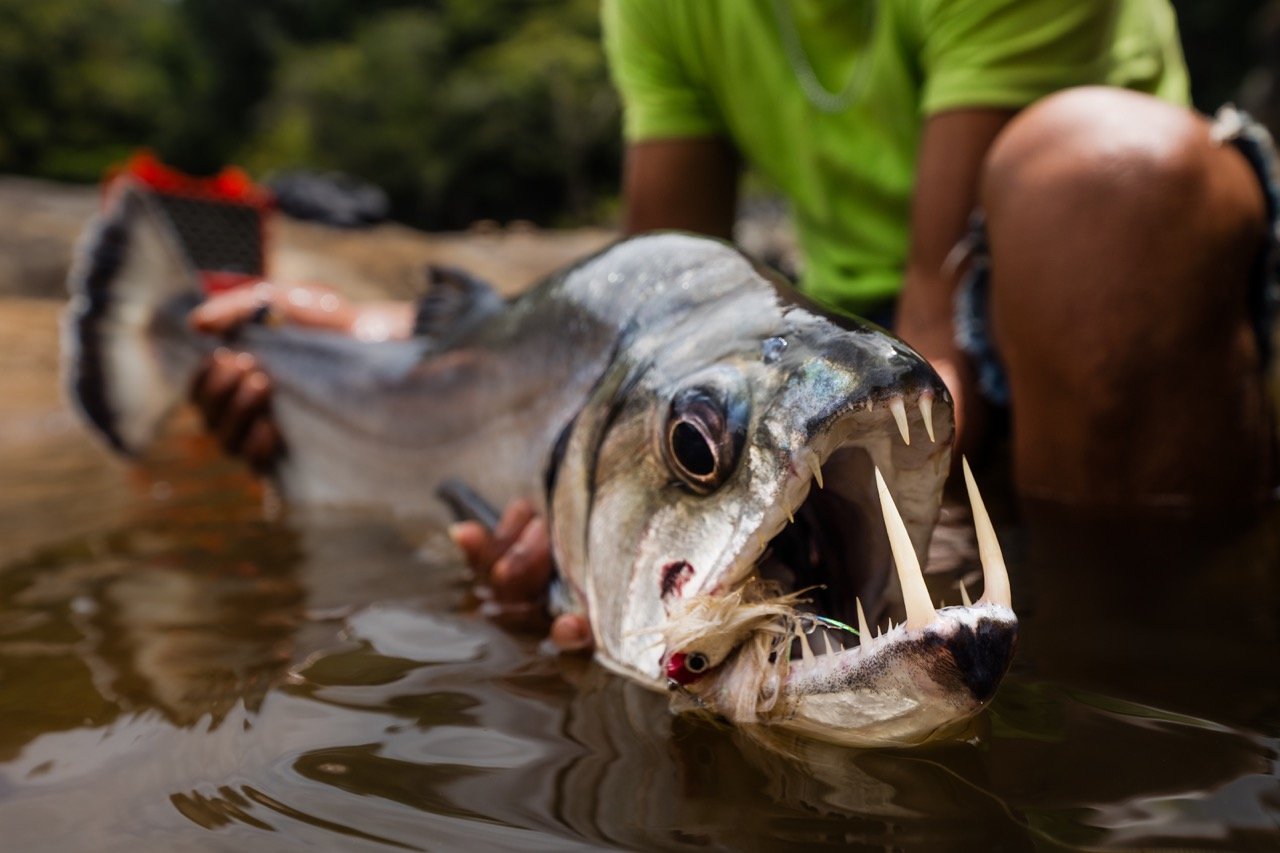
Payara are skilled hunters, using their sharp teeth to impale and immobilize prey, primarily targeting smaller fish like piranhas. These apex predators inhabit fast-flowing sections and deep pools, lurking in shadows, waiting to ambush unsuspecting victims. In my case, it was a red and white deceiver tied to a piece of wire leader long enough to outrun the payara’s gaping mouth.
When I finally got one to the rocks, it was easy to see why they fight so well. With a torpedo body and a square paddle tail, it looked like a mix of chinook salmon, tigerfish, and bulldog. Apparently, its upper jaw has holes in which to insert its sharp fangs, allowing the fish to close its mouth without damaging its teeth. I didn’t get close enough to confirm these facts.

Ten days in the jungle with a bunch of strangers and even stranger fish is a humbling experience. I felt the all too familiar pull of the wild—tempting me to go one step farther, to be unbridled and stealthy and focused, to revert to the 25-year-old girl happily lost in the mountains.

So, at night, down by the river in the openness of the starry sky, I gave myself full permission to trust my instincts and be my true self. As a small, sweet voice crackled and glitched on the other end of my satellite phone, I threw sticks at approaching caiman, kept one ear open for rustling in the bushes, and the other for updates about how “Harvey was a real pain on the bus at school today.”
Just a slightly feral, fully in-tune mother with a passion for the wilderness and her offspring, I realized in that moment that I didn’t have to make a decision. Like the outdoorsmen and women before, the wild will always be there waiting, because it never truly left me.
Want to join next year’s trip to Guyana with Sam? Find those details here.
Check out my behind the scenes video of our trip here.
All photos by Jesse Males, Backwater Fly Fishing.









